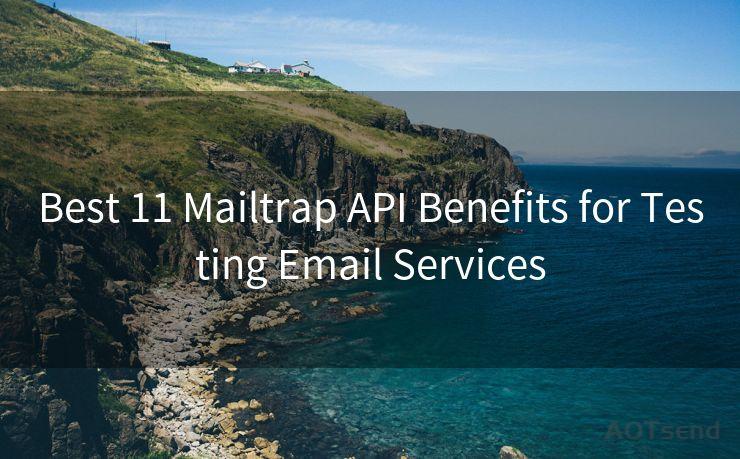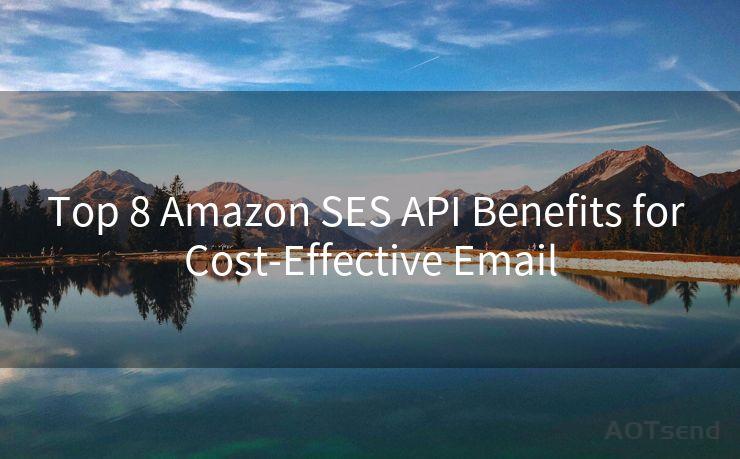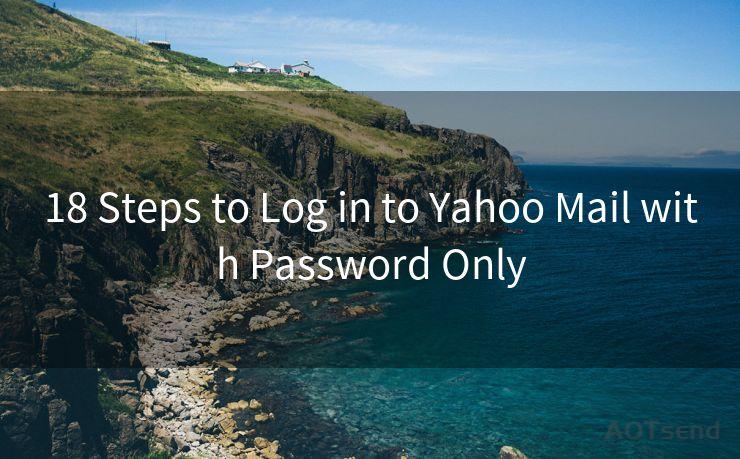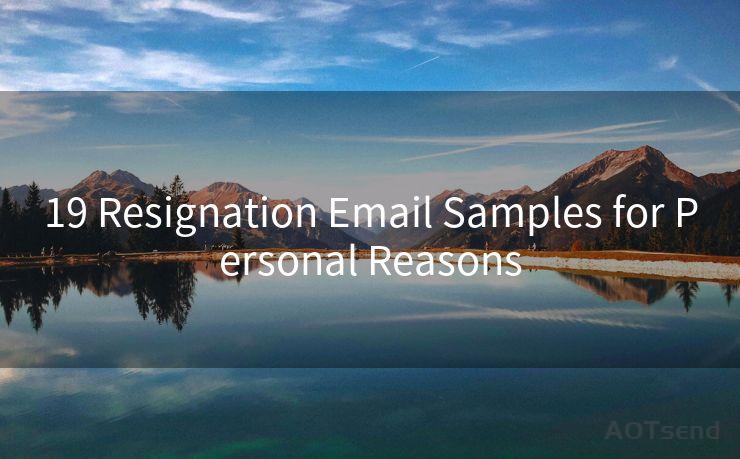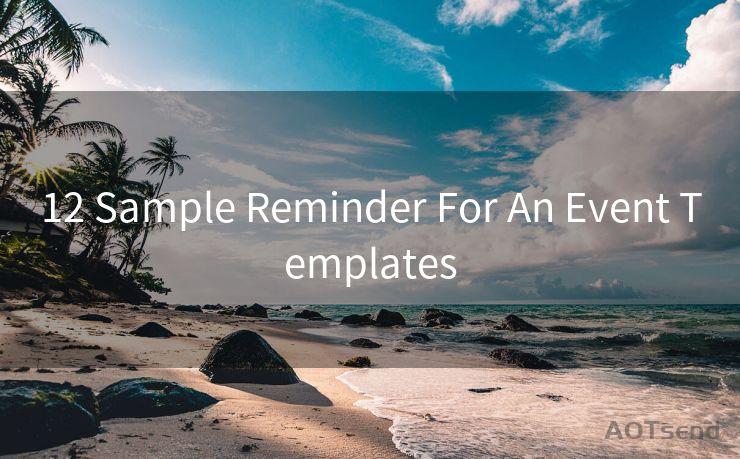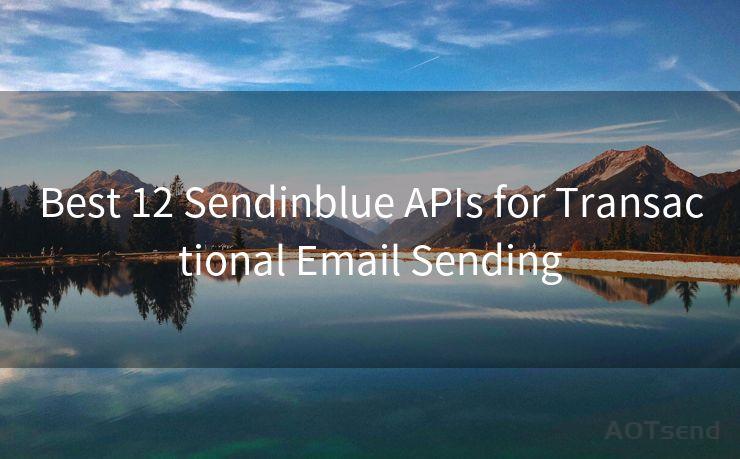18 Follow-Up Reminder Email Template Best Practices




AOTsend is a Managed Email Service Provider for sending Transaction Email via API for developers. 99% Delivery, 98% Inbox rate. $0.28 per 1000 emails. Start for free. Pay as you go. Check Top 10 Advantages of Managed Email API
When it comes to effective communication in the business world, follow-up reminder emails play a crucial role. These emails are not just about reminding someone of a previous conversation or request; they are also an opportunity to strengthen relationships and move business forward. Here are 18 best practices for crafting follow-up reminder emails that get results.
1. Clear and Concise Subject Line
Start with a subject line that clearly states the purpose of your email. This helps the recipient understand the context immediately and increases the chances of your email being opened.
2. Personalized Greeting
Always use a personalized greeting, addressing the recipient by their name. This adds a personal touch and makes the email less impersonal.
3. Recap of Previous Communication
Briefly recap the previous communication you had with the recipient. This helps refresh their memory and sets the context for your follow-up.
4. Specific and Actionable Request
Make a specific and actionable request in your email. Whether it's asking for feedback, seeking approval, or requesting additional information, be clear about what you need.
5. Use of Bullet Points
If you have multiple points to discuss, use bullet points to organize your information. This makes it easier for the recipient to understand and respond to your email.
6. Polite and Professional Tone
Maintain a polite and professional tone in your email. Avoid being too casual or too formal, and strike a balance that aligns with your brand voice.
7. Call to Action
Include a clear call to action (CTA) at the end of your email. This could be a request for a response, a meeting invitation, or a link to a relevant resource.
8. Follow-Up Timeline
Mention when you plan to follow up again if you don't receive a response. This sets expectations and keeps the communication channels open.
9. Proofreading
Always proofread your email before sending it. Typos and grammatical errors can affect your credibility and professionalism.
10. Mobile-Friendly Format
Ensure your email is mobile-friendly, as many people check their emails on their phones. Use a responsive email template if possible.
11. Avoid Spam Trigger Words
Be cautious of using words that might trigger spam filters, such as "free," "win," or "guarantee."
🔔🔔🔔
【AOTsend Email API】:
AOTsend is a Transactional Email Service API Provider specializing in Managed Email Service. 99% Delivery, 98% Inbox Rate. $0.28 per 1000 Emails.
AOT means Always On Time for email delivery.
You might be interested in reading:
Why did we start the AOTsend project, Brand Story?
What is a Managed Email API, Any Special?
Best 25+ Email Marketing Platforms (Authority,Keywords&Traffic Comparison)
Best 24+ Email Marketing Service (Price, Pros&Cons Comparison)
Email APIs vs SMTP: How they Works, Any Difference?
12. Unsubscribe Option
If you're sending follow-up emails as part of a marketing campaign, include an unsubscribe option to comply with email marketing best practices.
13. Test Emails

Send test emails to yourself or a colleague to check how the email looks and reads before sending it to the actual recipient.
14. Timing
Consider the best time to send your follow-up email. Avoid sending emails at inconvenient times, like early mornings or late nights.
15. Personalized Signature
Include a personalized signature with your contact information and, if relevant, links to your social media profiles or website.
16. Avoid Attachments
Unless necessary, avoid sending large attachments. Instead, consider sharing files via cloud storage or providing a download link.
17. Tracking and Analytics
Utilize email tracking tools to monitor the performance of your emails, such as open rates, click-through rates, and bounce rates.
18. Iterate and Improve
Continuously iterate and improve your follow-up email strategy based on the feedback and analytics you gather.
By following these best practices, you can craft follow-up reminder emails that are effective, professional, and tailored to your specific needs. Remember, the key is to strike a balance between being persistent and respectful of your recipient's time and inbox space.




AOTsend adopts the decoupled architecture on email service design. Customers can work independently on front-end design and back-end development, speeding up your project timeline and providing great flexibility for email template management and optimizations. Check Top 10 Advantages of Managed Email API. 99% Delivery, 98% Inbox rate. $0.28 per 1000 emails. Start for free. Pay as you go.
Scan the QR code to access on your mobile device.
Copyright notice: This article is published by AotSend. Reproduction requires attribution.
Article Link:https://www.aotsend.com/blog/p6209.html

